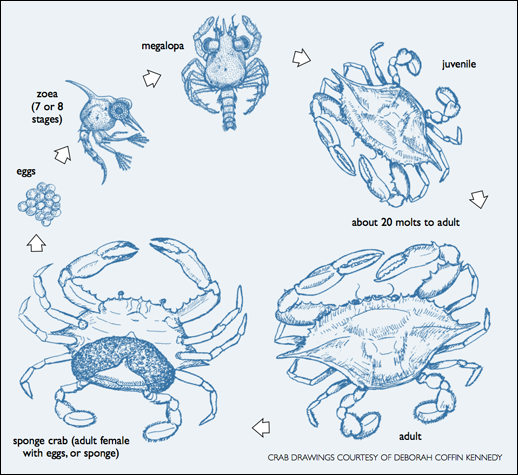|
Atlantic Blue Crab Life Cycle

WHEN FEMALE BLUE CRABS RELEASE THEIR EGGS, they hatch into zoeae. These strange-looking beings (gnatlike? shrimplike?) can float and swim, mainly to move up and down in the water column. They need high salinity water to grow and molt.
After molting up to eight times, zoeae go through metamorphosis to emerge as megalopae. Now they look more like wannabe lobsters than soon-to-be crabs. They can crawl as well as swim. And they have claws.
Not many megalopae make it to the next stages, but a few become tiny blue crabs, called the instar stage, and then juveniles. Clearly recognizable as small crabs, juveniles will molt up to 20 more times in their journeys up the Chesapeake and into adulthood.
Just after her final molt, a mature female will have her first and last chance to mate. Once she mates, she will then hang onto the sperm while she migrates south to higher salinity waters near the mouth of the Bay. A female can produce several broods of eggs which she'll carry on her belly as a dense orange mass. When it was legal to catch and sell them, crabbers called these pregnant females "sponge crabs."
When they're ready, females can produce millions of eggs (from 8 to 14 million). Only two have to reach adulthood to give the Bay a steady-state population.
— M.W.F.
|